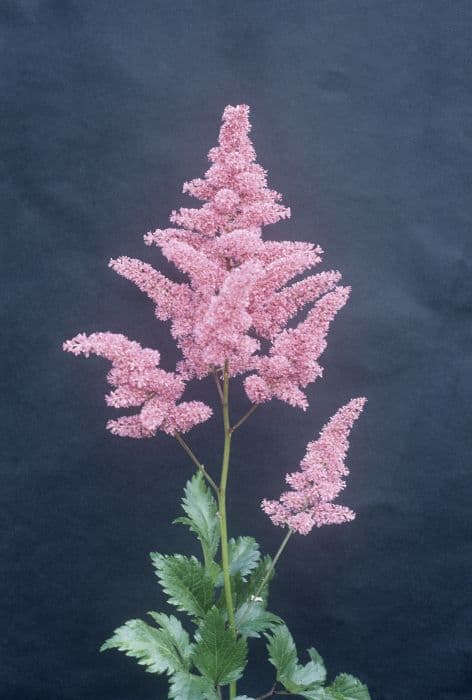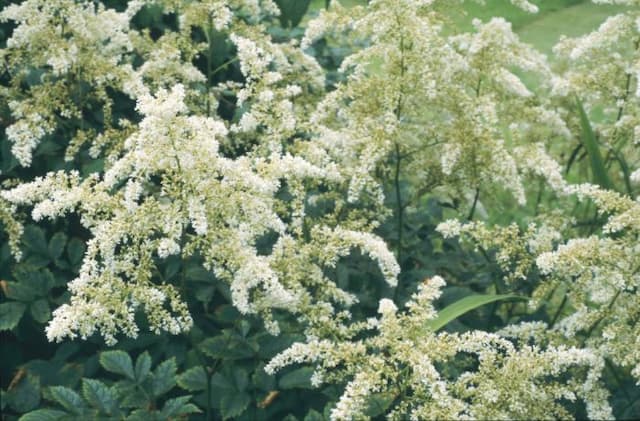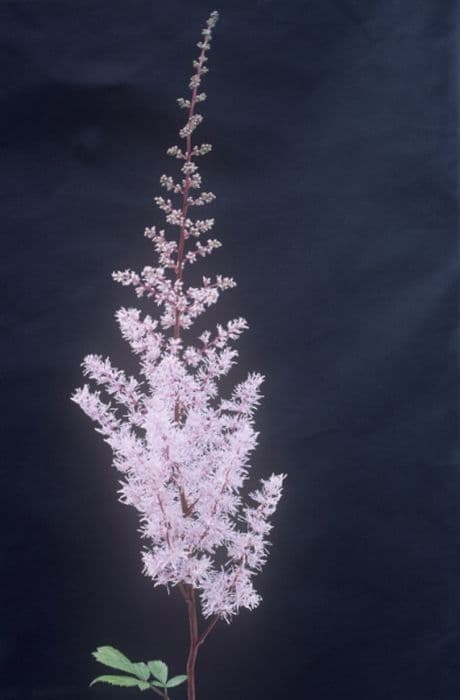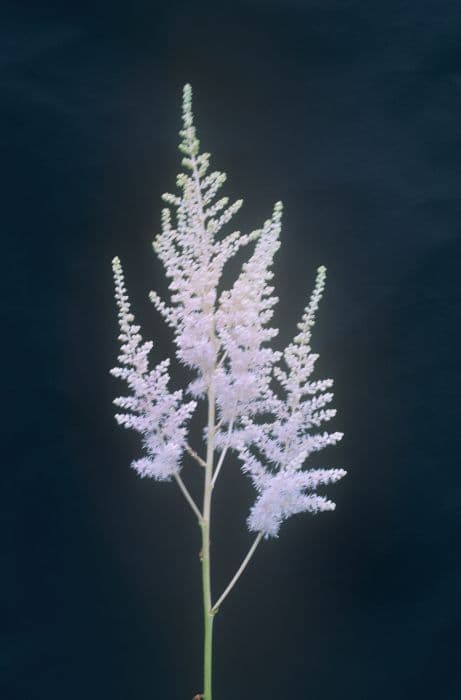Whitehill Saxifrage Saxifraga 'Whitehill' (8)

ABOUT
Saxifraga 'Whitehill' is a striking plant characterized by its lush foliage and charming flowers. The leaves are typically arranged in a rosette pattern, forming a dense mat of greenery. The foliage can vary from deep green to bright green shades, and is often fleshy and robust, adding a textured look to the plant. Each leaf is usually small and may have a rounded to slightly pointed shape with finely serrated edges that give a delicate appearance. During the blooming season, the plant sends up flowering stems that bear clusters of attractive flowers. These flowers are typically pure white, which can create a beautiful contrast against the surrounding greenery or any backdrop in a garden setting. Each flower is composed of five petals that are usually rounded, with a simplicity that adds to the plant’s charm. The center of the flower often features yellow or red markings, which serve to draw in pollinators and add a splash of color to the overall appearance. Saxifraga 'Whitehill' has a mounding growth habit and the texture provided by its foliage, along with the elegant white flowers, makes this plant a delightful addition to rock gardens, alpine collections, or as ground cover in suitable climates and conditions. The plant also has a tendency to bloom profusely under the right circumstances, providing an abundance of flowers that enhance its ornamental value.
About this plant
 Names
NamesFamily
Saxifragaceae
Synonyms
Whitehill Saxifrage, Encrusted Saxifrage, Silver Saxifrage
Common names
Saxifraga 'Whitehill'
 Toxicity
ToxicityTo humans
Saxifrage 'Whitehill' is generally considered non-toxic to humans. No significant toxicity has been reported for the ingestion of this plant. Therefore, consuming any part of the Saxifrage 'Whitehill' is unlikely to result in poisoning or adverse health consequences.
To pets
Saxifrage 'Whitehill' is commonly known to be non-toxic to pets. This plant does not contain any known toxins that would pose a risk to animals if ingested. As such, there are no specific symptoms of poisoning associated with this plant, and ingestion should not lead to any significant health issues for pets.
 Characteristics
CharacteristicsLife cycle
Perennials
Foliage type
Evergreen
Color of leaves
Green
Flower color
White
Height
6 inches (15 cm)
Spread
6 inches (15 cm)
Plant type
Herb
Hardiness zones
5
Native area
Europe
Benefits
 General Benefits
General Benefits- Aesthetic Appeal: Saxifraga 'Whitehill', commonly known as Whitehill saxifrage, has attractive white flowers and lush green foliage that enhance the visual appeal of gardens and landscapes.
- Low Maintenance: This plant is relatively easy to care for and does not require extensive upkeep, making it ideal for both novice and experienced gardeners.
- Hardiness: Whitehill saxifrage is known for its ability to withstand challenging weather conditions and can survive in a variety of climates.
- Drought Tolerance: Once established, it is quite drought-resistant, which is particularly beneficial in areas prone to water scarcity or for gardeners who prefer low water-use plants.
- Rock Garden Suitability: This saxifrage variety is well-suited for rock gardens due to its compact growth habit and ability to grow in crevices or alpine conditions.
- Pollinator Friendly: The flowers of Whitehill saxifrage attract various pollinators such as bees and butterflies, contributing to the health of the local ecosystem.
- Ground Cover: It can serve as an effective ground cover, spreading across the soil to reduce weed growth and soil erosion.
- Seasonal Interest: With its spring blooming season, Whitehill saxifrage provides a seasonal accent in the garden, offering a splash of color after the winter months.
 Medical Properties
Medical PropertiesThis plant is not used for medical purposes.
 Air-purifying Qualities
Air-purifying QualitiesThis plant is not specifically known for air purifying qualities.
 Other Uses
Other Uses- Saxifraga 'Whitehill' can be used as a natural dye source; the leaves and petals contain pigments that can dye fabrics a range of subtle green and yellow hues.
- The plant can serve as an indicator for seasonal changes as it blooms in response to temperature and daylight changes, offering a natural method for gardeners to gauge the timing for planting other species.
- Due to its texture, Saxifraga 'Whitehill' can be used in sensory gardens designed to provide tactile experiences, particularly for those with visual impairments.
- It is used in miniature gardens or fairy gardens due to its small size and delicate appearance, adding a sense of whimsy and fantasy to such landscapes.
- The Saxifraga 'Whitehill' is suitable for planting between paving stones where its roots can help stabilize the stones and reduce weed growth.
- This plant can act as a living mulch, covering the soil, retaining moisture, and minimizing soil erosion in garden beds.
- Photographers sometimes use Saxifraga 'Whitehill' as a subject for macro photography, showcasing the intricate details of its leaves and flowers.
- The plant's unique appearance can be employed in art projects, such as pressing its flowers for inclusion in botanical printmaking or papermaking.
- In education, Saxifraga 'Whitehill' can be used to teach botany and horticulture, illustrating plant growth, reproduction, and alpine plant adaptations.
- Saxifraga 'Whitehill' can be a part of a green roof planting scheme, helping to insulate buildings and provide urban wildlife with habitats.
Interesting Facts
 Feng Shui
Feng ShuiThe Saxifrage is not used in Feng Shui practice.
 Zodiac Sign Compitability
Zodiac Sign CompitabilityThe Saxifrage is not used in astrology practice.
 Plant Symbolism
Plant Symbolism- Perseverance and Tenacity: The genus name, Saxifraga, comes from Latin "saxum" meaning rock, and "frangere" meaning to break. Saxifraga species are known for their ability to grow in rocky, challenging environments, symbolizing one's ability to persist and grow through hard times.
- Purity: The 'Whitehill' variety of Saxifraga has white flowers, which are often associated with purity and innocence in the language of flowers.
- Protection: In some traditions, Saxifraga plants are believed to offer protection due to their resilient nature, symbolizing a protective barrier against adversity.
 Water
WaterWhitehill Saxifrage requires consistent moisture and should be watered thoroughly when the top inch of the soil feels dry to the touch. On average, this may translate to watering once every week, but this frequency can vary depending on environmental conditions such as temperature and humidity. When watering, apply water directly to the base of the plant, ensuring the water penetrates the soil to reach the roots. It is important to avoid overhead watering to prevent leaf diseases. The plant generally benefits from about a gallon of water at each watering session, but always adjust the amount according to the plant's size and the environmental conditions.
 Light
LightWhitehill Saxifrage thrives in conditions with partial shade to full shade. It is best situated in a spot where it can be protected from the intense afternoon sun, as this can cause leaf scorch. The ideal lighting condition for this plant is dappled sunlight beneath taller plants or shaded garden areas where it can receive bright, indirect light.
 Temperature
TemperatureWhitehill Saxifrage is hardy and adapts well to a variety of conditions, preferring cool to moderate temperatures. The plant can generally survive in temperature ranges between 40°F and 75°F, which are ideal for its growth. It is important to protect the plant from extremely cold temperatures below 20°F, as this can cause damage to the foliage and roots.
 Pruning
PruningPruning Whitehill Saxifrage helps to maintain its shape and remove any dead or damaged foliage. Prune lightly after the flowering season to promote new growth and a compact form. Pruning too often is not necessary; once a year is typically sufficient. The best time for pruning is late winter or early spring before new growth begins.
 Cleaning
CleaningAs needed
 Soil
SoilMossy Saxifrage, or Saxifraga 'Whitehill', thrives in well-drained soil with a mix of loam, peat, and sharp grit at a slightly acidic to neutral pH of 6.0 to 7.0.
 Repotting
RepottingMossy Saxifrage should be repotted every 2 to 3 years to refresh soil and prevent overgrowth.
 Humidity & Misting
Humidity & MistingMossy Saxifrage prefers moderate humidity levels, but as an alpine plant, it can tolerate lower humidity environments.
 Suitable locations
Suitable locationsIndoor
Place in bright light; avoid full sun.
Outdoor
Plant in partial shade with good drainage.
Hardiness zone
4-8 USDA
 Life cycle
Life cycleSaxifraga 'Whitehill', commonly known as Whitehill saxifrage, begins its life cycle as a seed, which upon germination in moist, well-draining soil, develops into a small seedling. As it grows, it forms a tight, low-growing rosette of spoon-shaped, fleshy leaves, characteristic of many alpine plants. The plant enters a vegetative stage, during which it may produce offsets or daughter rosettes around the main plant, contributing to its clump-forming habit. In late spring or early summer, Whitehill saxifrage produces tall, slender flowering stems topped with panicles of small, star-shaped white flowers that attract pollinators. After pollination, the flowers develop into capsules containing numerous tiny seeds, which can be dispersed by wind or water to start new plants. Subsequently, the mature plant may die back in winter, especially in colder regions, but is generally perennial, emerging again in spring to repeat its life cycle.
 Propogation
PropogationPropogation time
Spring-Early Summer
Saxifraga 'Whitehill', commonly known as Whitehill Saxifrage, can typically be propagated through division. The best time for this method is usually in the spring as the plant emerges from dormancy and the new growth begins to appear. To propagate by division, carefully dig up the parent plant and gently separate the clumps of leaves and roots into smaller sections, each with its own roots and shoots. These sections can then be immediately replanted into a well-draining soil mix, ideally with some shade to protect the newly planted divisions. Ensure that the divisions are watered thoroughly after planting to help establish them in their new location. This method allows gardeners to quickly and effectively create new plants that are genetically identical to the parent, ensuring the preservation of any desirable characteristics.









